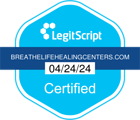Eating disorders affect people of every age, race, gender identity, sexual orientation, size, and background. Like substance abuse, eating disorders do not discriminate. At some point in their lives, 9 percent of the population, or 28.8 million Americans, will have an eating disorder.
When people hear the term ‘eating disorder’, they usually think of bulimia or anorexia. While these are the more common eating disorders, they are not the only ones. Eating disorders can look very different from what we might think, sometimes delaying an appropriate diagnosis.
As a matter of fact, a person can have an eating disorder without even realizing it! For example, a binge eating disorder can make a person look like a ‘foodie’, while a person with anorexia can be mistaken for a picky eater. It’s important to identify when a person has an eating disorder because, without treatment, it can be fatal.
What Are the Different Types of Eating Disorders?
It helps to understand the various types of eating disorders, as they all come with different symptoms and warning signs. Let’s cover the most common eating disorders, including those that are not yet recognized in the DSM-5 (Diagnostic and Statistical Manual of Mental Disorders).
- Anorexia Nervosa is the most severe eating disorder. It involves severe food restriction, extreme exercise, and purging. People with anorexia have a fear of gaining weight.
- Bulimia Nervosa occurs when someone repeatedly binges on large amounts of food and then purges it. Over-exercising, diet pills, and laxatives are also common.
- Binge-Eating Disorder (BED) is similar to bulimia except that it does not involve purging behaviors. People with BED are often overweight.
- Orthorexia Nervosa is an obsession surrounding food quality and purity. It might look like healthy eating, but the person becomes so obsessed, it disrupts their life.
- Other Specified Feeding and Eating Disorders (OSFED) is a classification for those who do not meet the diagnostic criteria for any other eating disorder.
- Avoidant Restrictive Food Intake Disorder (ARFID) is a newer diagnosis that involves limiting food but does not involve distress about body shape and size.
- Rumination Disorder involves the regular regurgitation of food, and that food may be re-chewed, re-swallowed, or spit out.
- Unspecified Feeding or Eating Disorder (UFED) is when there is insufficient evidence to justify a formal diagnosis. In time, this diagnosis can change.
Hidden Signs You Might Have an Eating Disorder
Now that you’re familiar with the different types of eating disorders, you can understand how some disorders can be missed. People with eating disorders become very good at hiding their condition, though sometimes, they might not even know what they’re dealing with.
Without early detection, eating disorders can lead to long-term problems such as gastrointestinal issues, fatigue, dehydration, inflammation, and more. Below are some hidden signs that you may be suffering from an eating disorder that requires intervention.
You think about food all the time.
Is food always on your mind? Being aware of your nutrition isn’t a problem in itself, but intrusive thoughts can be. If you’re not sure that what you’re feeling is normal, take notes so that you can see how often you’re thinking about food.
You’re getting increasingly strict about what you eat.
The stricter you become with what you eat, the less variety you have and the less enjoyment you get out of your meals. Plus, an obsession with food in any way can be dangerous. If you’re worried that you’re not getting enough nutrition, talk to a nutritionist about your food choices.
You’re obsessed with your weight.
Another dangerous obsession is with your weight. Do you weigh yourself secretly throughout the day? Is your mood dramatically changed by the numbers on the scale? If so, this could be a sign that you have an eating disorder. Other numbers are more important than your weight, such as your resting heart rate, cholesterol, and blood pressure.
You use laxatives to lose weight.
Another common habit that people with eating disorders sometimes do is take laxatives. While the occasional use of laxatives can be safe, they are not meant to lose weight. If you find yourself using laxatives to drop pounds, recognize that this is a dangerous behavior that can lead to bigger problems.
You feel ashamed of yourself.
Coping skills serve the purpose of helping us through tough times, but they can become problems of their own. For example, food and exercise may have helped you get through a difficult time in your life. But if you find yourself obsessing over them, the behavior may be no longer positive.
You can’t stop eating.
Some people cut back on what they eat, while others indulge. If you are losing control over how much you eat, especially during times of stress, you may be developing an eating disorder. Foods, especially high-sugar sweets and snacks, give a rush of pleasure, which is why they can become addictive.
Where to Get Help for an Eating Disorder
If you have any doubt in your mind that your eating habits are unhealthy, it’s important to reach out for help. Talk to a trusted friend, family member, or medical professional. We know more about eating disorders than ever before, including how to identify and treat them.
Breathe Life Healing Centers treats individuals with eating disorders and other mental health conditions. Contact us today to learn more about our treatment services for people with bulimia, anorexia, and other eating disorders.













